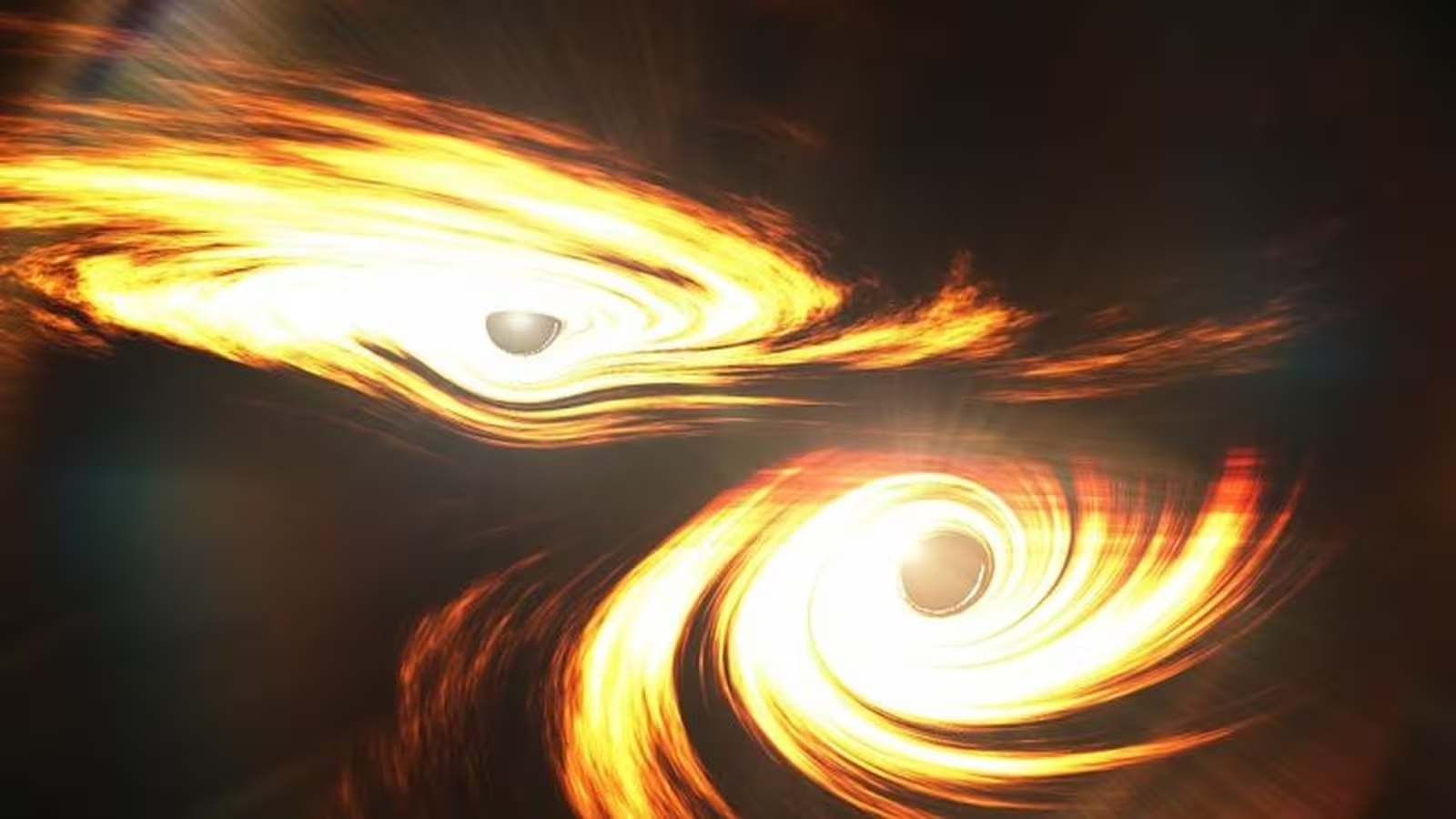5 Minutes
Unprecedented Black Hole Merger Observed
Astronomers have detected a black hole collision of extraordinary magnitude, potentially transforming our understanding of black hole evolution and growth across the universe. The event, designated GW 231123 after its detection date of November 23, 2023, marks the most massive black hole merger ever recorded by gravitational wave observatories. Following the cosmic cataclysm, the resulting black hole now surpasses 225 times the mass of our Sun—a mass greater than any previously observed in such cosmic events.
Challenging Established Theories of Black Hole Formation
Prior to GW 231123, the largest black hole merger yielded a final object 142 times the mass of the Sun. What sets this new event apart is that both merging black holes already exceeded the theoretical upper mass limit for black holes formed from the collapse of individual stars (so-called stellar-mass black holes). According to standard stellar evolution, objects of this size should not exist, as massive stars undergoing collapse would instead obliterate themselves in pair-instability supernova explosions, leaving no remnant core.
Mark Hannam, an astronomer and physicist at Cardiff University, explains: “This is the most massive black hole binary we've observed through gravitational waves. It presents a real challenge to our understanding of black hole formation. Black holes this massive are forbidden by our standard models. One possibility is that they formed from earlier black hole mergers, gradually building up mass over multiple events.”
The Role of Gravitational Wave Astronomy
The era of gravitational wave astronomy began in 2015, when the Laser Interferometer Gravitational-Wave Observatory (LIGO) first detected the faint ripples in space-time caused by a distant merger. Since then, LIGO, alongside the Virgo and KAGRA observatories, has cataloged around 300 gravitational wave signals from black hole mergers scattered throughout the cosmos. By analyzing these ripples, scientists can deduce crucial properties of the colliding black holes, such as their mass and spin.
Detecting small or stellar-mass black holes in the universe is notoriously difficult, as they emit no light that telescopes can observe. However, gravitational wave signals from their collisions provide direct evidence of their existence and characteristics, allowing astronomers to verify and refine their theories of black hole populations and origins.
Understanding Black Hole Mass Limits
Black holes with masses far greater than typical stellar remnants—known as intermediate-mass black holes—are of particular interest. Theoretical models suggest that black holes above roughly 40–60 solar masses cannot form from a single star’s collapse due to the pair-instability process, in which the end-of-life explosion of the star leaves nothing behind. Mergers like GW 231123, where both black holes were above this limit, suggest a multi-generational formation process.
Spins and Clues to Black Hole Histories
Adding to the intrigue, researchers note that both black holes involved in GW 231123 were spinning at velocities close to the theoretical maximum, complicating analysis of the gravitational wave signal. Rapid spin can be a sign that a black hole is the product of previous mergers. When two black holes coalesce, the resulting object often inherits a high spin rate. By tracking such properties, astronomers can potentially distinguish between black holes formed directly from collapsing stars and those born from earlier merger events.
Physicist Gregorio Carullo from the University of Birmingham comments: “It will take years for the community to fully unravel this intricate signal pattern and all its implications. Despite the most likely explanation remaining a black hole merger, more complex scenarios could be the key to deciphering its unexpected features. Exciting times ahead!”
Implications for Supermassive Black Hole Growth
The record-breaking merger of GW 231123 brings fresh insight into the long-standing mystery of how supermassive black holes—millions to billions times the mass of the Sun—form in galactic centers. Experts have debated whether such cosmic giants grow rapidly from massive single events or through successive mergers of smaller black holes. This new observation supports the latter possibility, indicating that repeated black hole mergers may play a crucial role in the long-term growth and evolution of these enigmatic gravitational behemoths.
Conclusion
The discovery of GW 231123 stands as a landmark achievement in gravitational wave astronomy, forcing scientists to revisit and refine their theories on black hole formation and growth. The extraordinary mass and rapid spin of the merging black holes challenge existing models, suggesting a complex, dynamic history of mergers shaping the population of black holes in our universe. As researchers continue to analyze the intricate data from this event, they anticipate new revelations that will deepen our understanding of the darkest objects in the cosmos—and illuminate the processes driving the expansion and evolution of galaxies over cosmic time.



Comments